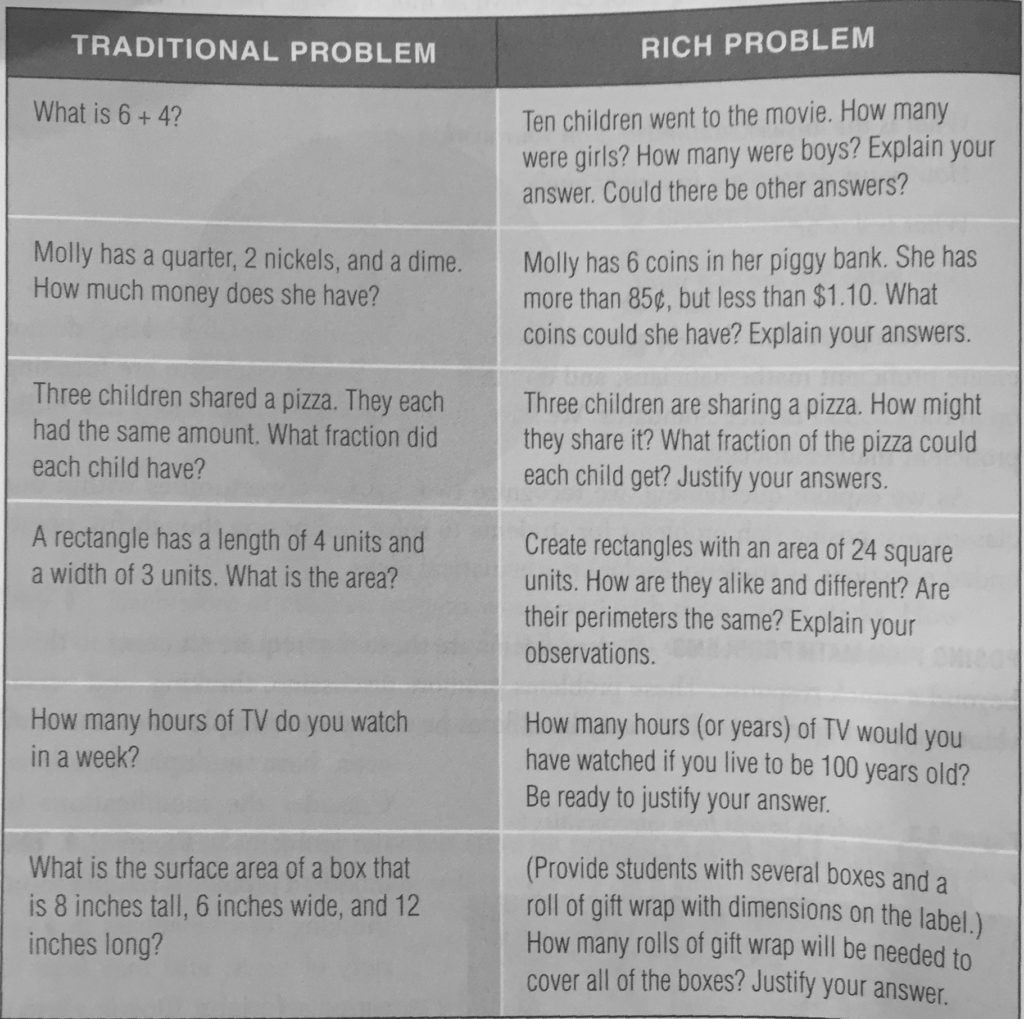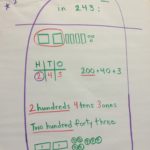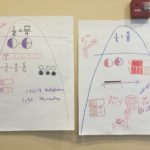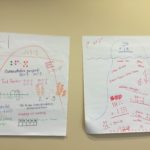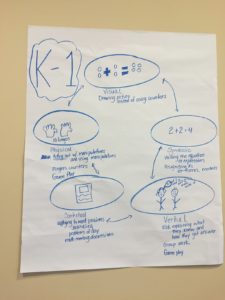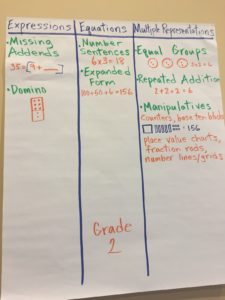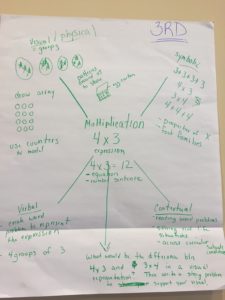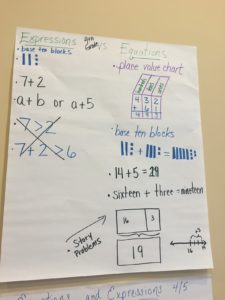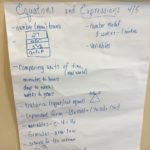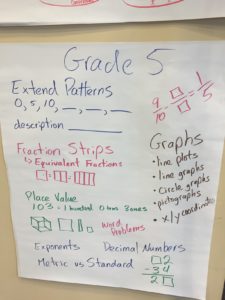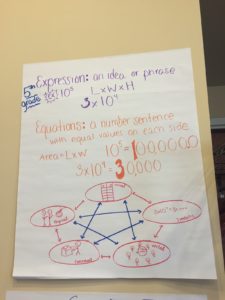Homework Review
We began by reviewing the homework. Different tables discussed different problems, and we had some good back-and-forth about factoring and dividing to one. Fran highlighted how a bit part of algebra success is recognizing certain features such as common factors.
Norms
Then we moved our chairs so that we could sit in a big circle and discuss the norms that we–as a group– have established this week. Here’s a list of what we talked about:
- Making mistakes is okay.
- Five minutes means five minutes.
- Working in a group helps learn math.
- Be a good group member.
- Ask questions when you don’t understand something.
- Create a safe environment for students.
- Be an active participant.
- Multiple approaches to solving math problems are valued.
- Explain your thinking.
- Teachers said “explain your answer” whether or not the answer is right or wrong.
- Try your best
- Establish routines for “housekeeping” (e.g., getting quiet)
Group Picture
We got a group picture, which will be posted soon.
Fraction Addition and Subtraction
We began our discussion about fraction addition and subtraction, starting with length-based models and how that can support what sums of (positive) fractions should be. We repeated (frequently) about how our different models of fractions can grant different insights into the arithmetic. For example, length-based models demonstrate what the sum should be, and finding an appropriate way to measure that length brings about a common denominator. Fraction models based on amount-of-pieces (e.g., slices of pizza) can present a hurdle (which can be overcome) when the sum is more than one. Viewing fractions as proportions (i.e. seeing 1/2 as one out of every two) is ill-suited for adding fractions.
Fraction Multiplication
We next moved into fraction multiplication by exploring 4 interpretations of (2/3)×(4/5):
- Add up (2/3) copies of (4/5)
- Find the area of a rectangle with length (2/3) and width (4/5)
- Find (2/3) of (4/5)
- A ribbon is 4/5 feet long, and is cut into 3 equal-length pieces. How long would 2 of them be?
We found that #1, based on repeated addition, is ill-suited for multiplication when neither is a whole number. Option #3 isn’t much better, at least as far as intuition-building. Models 2 and 4 were most convincing. We spent the rest of the morning discussing our area models for #2, progressing to other examples, one where one factor is greater than one, and another where the product is greater than one. The area model reinforced how the numerator of a fraction is an amount of pieces while the denominator describes how small the pieces are.
Lunch
Fraction Division
We wrapped up the discussion of fraction multiplication by briefly exploring interpretation #4 above and cutting a fractional length into equal pieces. That problem reinforced the “2/3 is two pieces of size 1/3” viewpoint.
We also briefly discussed why mixed number multiplication can be problematic.
After eating lunch together, we resumed our discussion of fraction division. We drew pictures, compared models, and learned about the common denominator method!
“I’m Stuck!”
We began the pedagogy part of the day by compiling suggestions for a “I’m Stuck” poster:
- When in doubt, draw it out
- Try for 10 minutes and then walk away
- Read the room
- Ask a partner
- Explain what you do know
- Make a table
- What do you need to know
- Decompose/recompose or rename numbers
- Use a manipulative or other kind of manipulative
- Use a model (tape model, number line, array)
- Restart the problem in a new way (pick a new pathway)
- Reread problem (out loud)
- Rewrite problem
- Ask the teacher (a specific question)
Planning Lessons that support our goals
We then picked up our work with our grade-level colleagues and looked for more high-level tasks and plan for supporting productive struggle.
We concluded our day by reflecting on our take-away messages and saying good-bye to some of our colleagues. It’s been a busy but fun week!
Homework
Enjoy the weekend, and come back refreshed on Monday morning.
(For the record, breakfast will not be provided Monday.)




